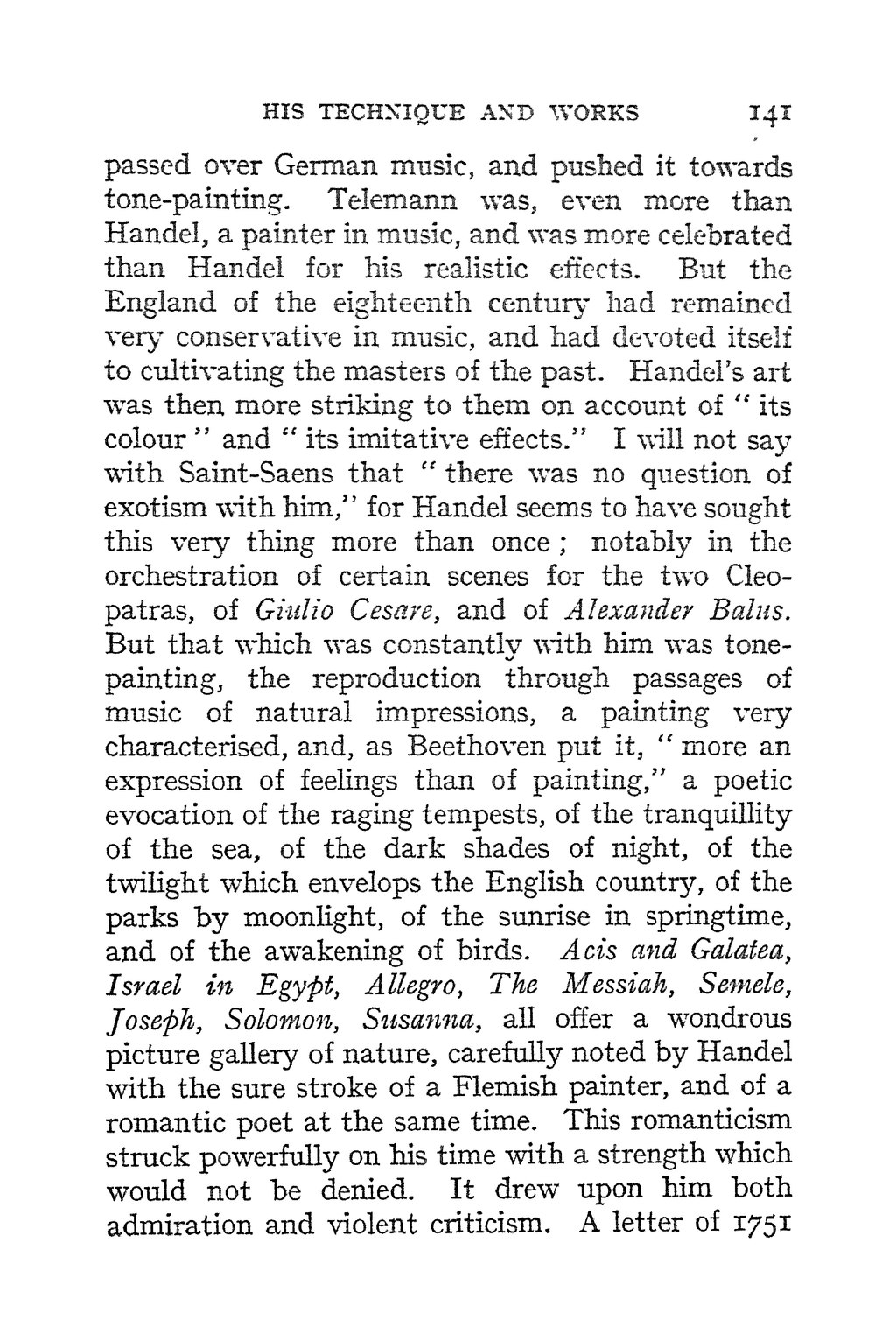passed over German music, and pushed it towards tone-painting. Telemann was, even more than Handel, a painter in music, and was more celebrated than Handel for his realistic effects. But the England of the eighteenth century had remained very conservative in music, and had devoted itself to cultivating the masters of the past. Handel's art was then more striking to them on account of "its colour" and "its imitative effects." I will not say with Saint-Saens that "there was no question of exotism with him," for Handel seems to have sought this very thing more than once; notably in the orchestration of certain scenes for the two Cleopatras, of Giulio Cesare, and of Alexander Balus. But that which was constantly with him was tone-painting, the reproduction through passages of music of natural impressions, a painting very characterised, and, as Beethoven put it, "more an expression of feelings than of painting," a poetic evocation of the raging tempests, of the tranquillity of the sea, of the dark shades of night, of the twilight which envelops the English country, of the parks by moonlight, of the sunrise in springtime, and of the awakening of birds. Acis and Galatea, Israel in Egypt, Allegro, The Messiah, Semele, Joseph, Solomon, Susanna, all offer a wondrous picture gallery of nature, carefully noted by Handel with the sure stroke of a Flemish painter, and of a romantic poet at the same time. This romanticism struck powerfully on his time with a strength which would not be denied. It drew upon him both admiration and violent criticism. A letter of 1751
Page:Romain Rolland Handel.djvu/151
Appearance

